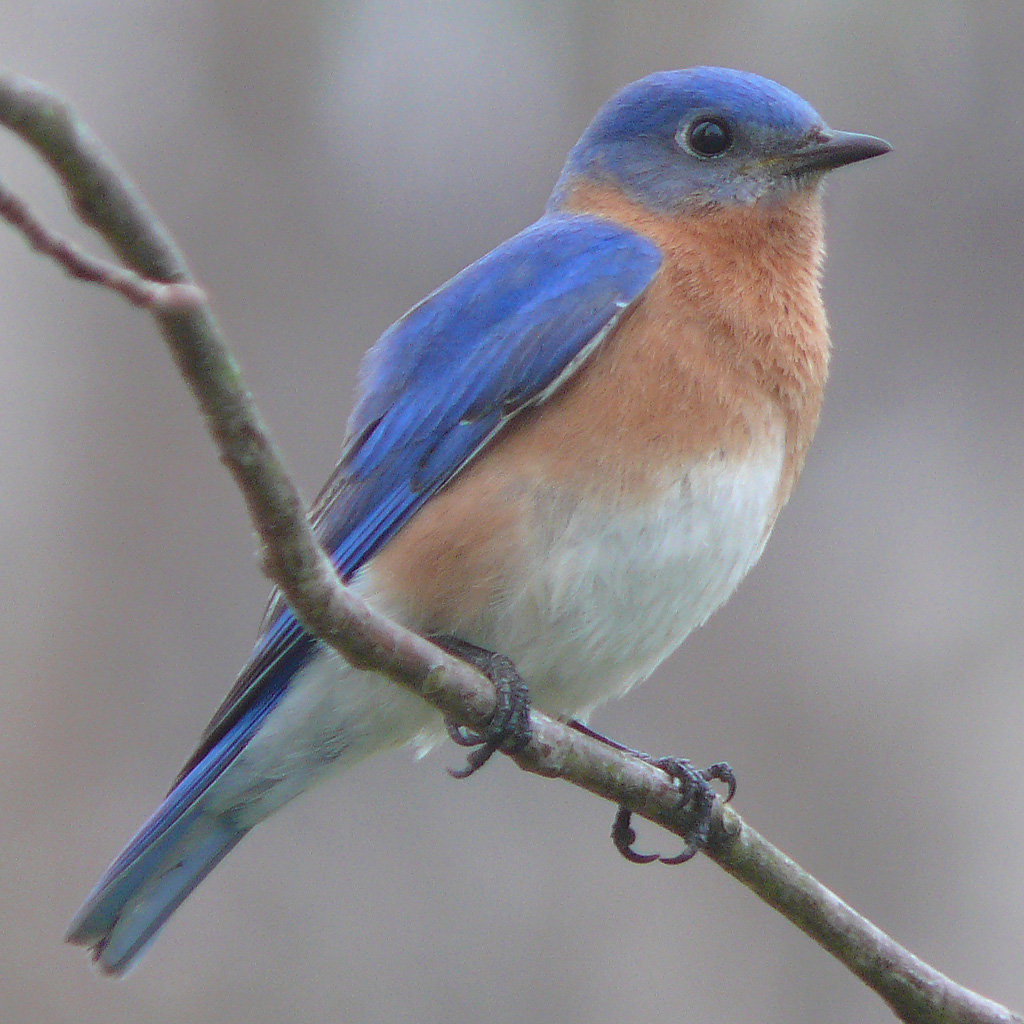
Eastern Bluebird
The phone rang. Again.
I didn't want to answer it. The two previous calls were from people who had found dying bluebirds in their yards. They wanted to help, but they needed someone to help them help the birds.
Yesterday, the call was from someone who had found a dead bluebird. Three emails about bluebirds also came.
One person had found a dozen dead or dying bluebirds in her yard. Another person recognized me at the coffee shop and wanted to relate yet another woeful bluebird tale.
The loss of a bluebird counts as nothing more than just one of those life and death things that happen in nature.
But so much loss at once is stunning.People everywhere love bluebirds, but Coloradans have special reason to esteem them.
The bluebirds are members of the thrush family. Considering we also have some blue warblers, blue buntings and blue jays the reality becomes obvious: all blue birds are not bluebirds. Just three species can claim the name "bluebird" and they are relatives of the robins, solitaires and thrushes.
Though every continental state has at least one bluebird species, all three species nest only in Colorado and three other states. Colorado and Arizona are the only states in which all three bluebirds live year-round.
Mountain and western bluebirds naturally occurred here. Savannah species, they prefer open areas in which to feed but old woodpecker cavities in which to nest. Either too many trees or not enough trees and they disappear from the lifescape.
Eastern bluebirds, like people, pioneered their way into Colorado.
The prairie and steppe grasslands of the Great Plains were a natural barrier that kept them in eastern states. First settlers planted trees, then trees planted themselves; and suddenly, treelands suitable for eastern bluebirds became available where they had never been before. And the eastern bluebirds responded by moving in on their own.
All three species migrate, but they are not long-distance travelers. Instead, they move a little distance but also shift their diets from mostly insects in summer to mostly fruits in winter.
Which probably explains the recent bluebird die-off.
Migratory birds use a lot of energy to get from where they are to where they want to be, and much of that energy comes from fat. Besides providing energy for flying, fat metabolized at night while a bird is resting produces the heat necessary to keep them from freezing.
Newly arrived migrant bluebirds would be shifting from their winter fruit diet to their summer insect diet and would have depleted fat reserves.
Nighttime temperatures in the teens or colder, inadequate fat reserves to stay warm, ground insects on which they feed covered by a foot of snow and fruits depleted by various birds consuming them all through the winter add up to a killer combination.
Young birds, old birds, sick birds would not -- could not -- survive such harsh circumstances. And they did not.
The toll was heavy but it was not complete. Enough bluebirds survived to keep their kind going. A dash of blue will still grace the mountain fence posts and aspen groves this summer. Such joyful sightings will help resolve the sorrow of seeing a lifeless bluebird in the snow.

Reader Comments
to our Newsletter